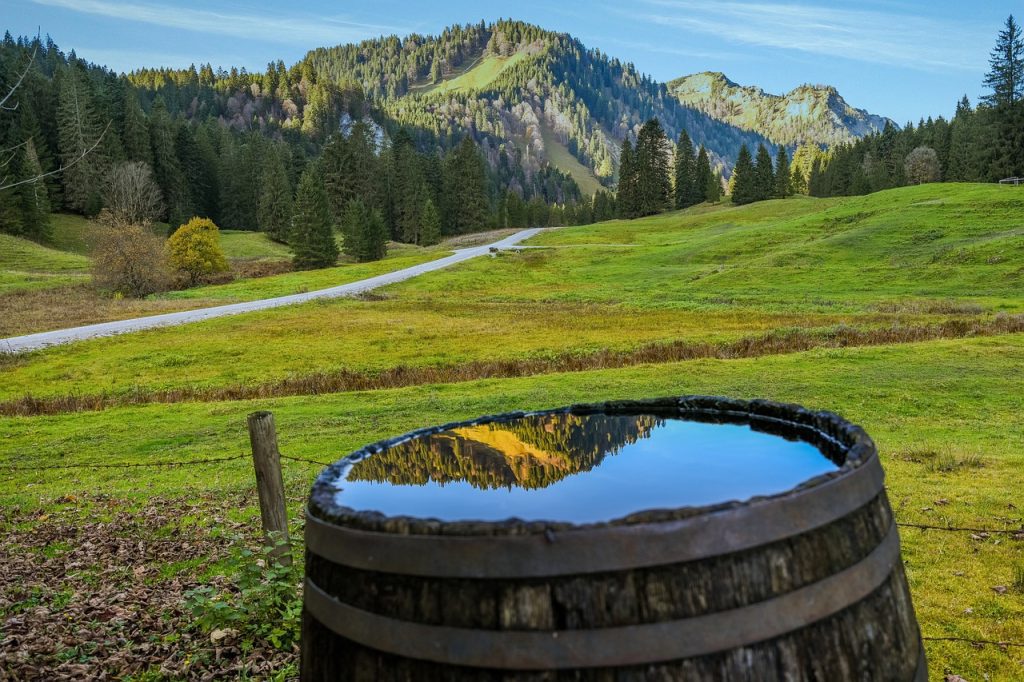If you were stranded on a deserted island, what would be your top priority? Food? A flare gun? Spoiler alert: it’s water! While our modern, urbanized lives often make us forget, water is the essence of life. And as more people are eyeing the off-grid lifestyle, it’s vital to learn the art and science of harnessing and purifying this liquid gold.
Ready to dive in?
Rain, Rain, Come Again: Rainwater Harvesting
Ah, the rhythm of raindrops on a tin roof; nature’s lullaby. But for those living off-grid, it’s also the sound of opportunity. Let’s dive deep into the world of rainwater harvesting – a method as ancient as civilizations yet as relevant as tomorrow’s forecast.
Why Harvest Rainwater?
“Why not just stick to ground water or other sources?” you might ponder. Well, here’s the catch:
- Purity: Rainwater is essentially distilled water. While it can catch impurities while falling, its baseline is often much purer than many ground or surface water sources.
- Sustainability: Think of it as nature’s own recycling process. Using rainwater reduces the strain on local water sources and decreases the dependency on traditional water supplies.
- Economic Savings: After the initial investment in a collection system, the water you collect is essentially free! No more water bills.
How Does It Work? The Basics
The beauty of rainwater harvesting lies in its simplicity. The process can be broken down into three main stages:
- Collection: This involves catching the rain. Most commonly, rooftops are used as catchment areas. The larger the catchment area, the more rain you can collect.
- Conveyance: Gutters and downspouts direct the water to the storage. It’s essential to ensure this system is free of leaks and is regularly cleaned to avoid contamination.
- Storage: Rainwater is stored in tanks or cisterns. Depending on your geographical area, you might want to consider large storage capacities to account for dry seasons.
Enhancing Quality: First Flush and Filters
But isn’t rainwater dirty? What about bird droppings and dust?
- First Flush Diverters: This ingenious device discards the first batch of rainwater, which carries the majority of contaminants from the roof. It’s like giving rainwater a “pre-rinse” before storage.
- Filters: A multi-stage filtration system can further purify the collected rainwater. Coarse filters remove leaves and debris, while fine filters can tackle smaller impurities before the water reaches the tank.
The Power of Position: Maximizing Collection
Here’s a nifty trick: the strategic positioning of your home or structure can significantly impact your rainwater yield.
- Slope: If you’re building from scratch, consider the slope of the land. Roofs tilted towards the direction receiving the most rain can enhance collection.
- Material Matters: Not all rooftops are made equal. While metal roofs are fantastic for rainwater harvesting due to their smooth surface, some materials might leach unwanted substances.
Rainwater harvesting is much more than just placing a bucket under a spout. It’s a blend of ancient wisdom and modern innovation, all aimed at tapping into one of nature’s most bountiful, yet underrated resources. The next time you hear the patter of raindrops, remember, it’s not just a pleasant sound; it’s the melody of sustainability. So, are you ready to dance in the rain?
Dew and You: Capturing Atmospheric Water
Morning dew isn’t just poetic; it’s potentially potable.
- Dew Traps: Structures that encourage dew formation and collection.
- Atmospheric Water Generators: Advanced devices pulling water from air humidity.
From Muddy to Mellow: Natural Filtration Methods
Mother Nature, in her wisdom, has secrets to crystal-clear water.
- Sand Filtration: Multiple layers of varying grain sizes cleanse water.
- Biosand Filters: A layer of biofilm adds an extra purifying touch.
Boil, Bubble, No Trouble: Purification Techniques
Because making a cup of tea shouldn’t be hazardous to health.
- Boiling: The age-old method. Boil for at least 10 minutes.
- Solar Purification: Using the sun’s UV rays to disinfect.
- Distillation: Separating contaminants through evaporation and condensation.
Storing Safely: Keep Contaminants at Bay
Storing water is not like hoarding old magazines!
- Dark Containers: Prevents algae growth.
- Elevated Tanks: Uses gravity for easy distribution.
- Regular Cleaning: Ensure containers are sanitized periodically.
The Future: Tech in Water Harvesting
Who said off-grid means backward?
- IoT Devices: Monitor water quality in real-time.
- Automated Filtration Systems: Self-cleaning, efficient purification.
Conserving: Every Drop Counts
In an off-grid world, water isn’t just a utility; it’s a treasure.
- Greywater Systems: Reuse household wastewater for non-drinking purposes.
- Low-Flow Fixtures: Reduce wastage with efficient appliances.
It’s Not Just About Drinking!
Water has many roles in the off-grid ballet.
- Gardening: Drip irrigation and rain gardens.
- Hygiene: Safe water for cleaning and bathing.
Gearing Up: Essentials for the Off-Grid Voyager
Setting off into the wilderness? Remember, water is weight in gold.
- Portable Filters: Lightweight and easy-to-use for the wanderer.
- Solar Stills: Compact, effective, and sun-powered.
Key Takeaway
Water harvesting and purification isn’t a mere skill; it’s a lifeline for those seeking freedom from urban shackles. With the right knowledge and tools, anyone can transform nature’s offerings into a safe, sustainable, and abundant water supply.
Are you ready to quench your thirst the off-grid way?



